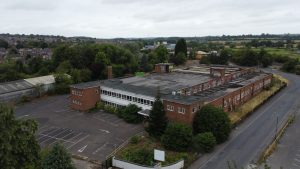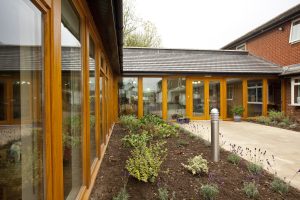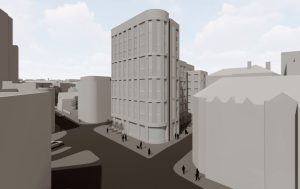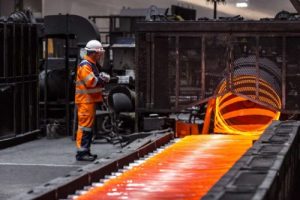Midlands buildings added to Victorian Society most-at-risk list
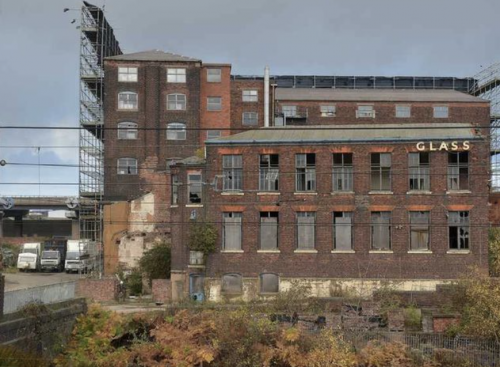
The Victorian Society has released its annual list of the UK’s most at-risk Victorian buildings, featuring three Midlands buildings which could be lost if action is not taken.
The 2024 list includes a requisitioned school where author Vera Brittain nursed during WWI, the last of one of the world’s first purpose-built amusement parks, a banqueting hall for workers, one of the first tennis pavilions in the world, and a building where the first £1m cheque was signed.
All buildings on the list are at least Grade II listed and despite these protections, the Victorian Society warns that additional actions are necessary to ensure their preservation.
For the Midlands, the Victorian Society has included three buildings:
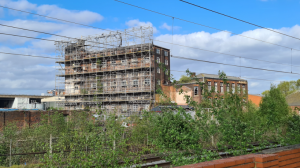
Chances Glassworks. Credit: The Victorian Society
Chances Glassworks, Smethwick
Once the world’s largest glassmaker employing 3,500 people, Chance Glassworks supplied iconic structures, such as around 2,300 of the world’s lighthouses, the Crystal Palace in London, windows for the White House, and the Houses of Parliament. It features a seven-storey warehouse, bridges, and a rare Siemens No7 Regenerative furnace, thought to be the last existing example in the world. All these are in poor repair. Deterioration on the canal side of the site has led the Canal & River Trust to close the neighbouring towpath which is a cycle path.
Glass manufacture took place continuously up until 1981. The site has since stood derelict for over 40 years and is now in the care of the Chance Heritage Trust.
The Trust has proposed a £25m regeneration scheme for the glassworks over the last 18 months. The work has resulted in a capital grant submission to the West Midlands Combined Authority for the first phase of the restoration.
Chances could be transformed into an urban village, including 150 new homes, business space and a heritage centre, but securing the capital grant is crucial to saving the buildings and working towards delivering the scheme.
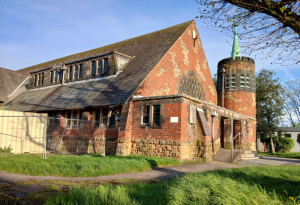
St Luke’s Chapel of Nottingham City Hospital
St Luke’s Chapel of Nottingham City Hospital, Nottinghamshire
The Arts and Crafts chapel was built as part of the Bagthorpe Workhouse, for the use of inmates and staff. Later the workhouse infirmary became the City Hospital.
Until the mid-1980s the chapel was opened daily for private use by patients, staff and visitors. It was decided to close the chapel in 1988 when a new chapel on the main corridor of the City Hospital was opened. It has been used subsequently by the hospital as a store.
The Victorian Society says it is encouraging the hospital to bring St Luke’s – ‘a glorious purpose-built space’ – back for its intended use. Alternatively, a sympathetic new use that ensures the long-term use and maintenance of the building is required.
Former education department offices, Derbyshire
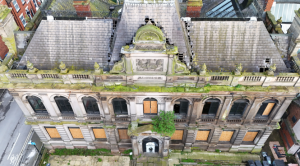
Former education department offices, Derbyshire
The renaissance-style palazzo was built to house the offices of the Derby Poor Law Guardians and subsequently the Derby Education Department. In the past it was used as a popular nightclub – Berlins, and then at the millennium, the site changed hands to become a different club, which in turn closed in the mid-2000s. It was sold again in 2009 but has since remained unused.
The Victorian Society says that with an entertainment venue opening opposite, this well-located building should benefit from increased visitors coming to the area and would lend itself to a variety of new uses.
The remaining Victorian buildings on the 2024 list include:
Kennington Boys’ School, London
Requisitioned as part of the 1st London General Hospital during WWI, this Board School was the first posting of writer and campaigner Vera Brittain when she served as a VAD nurse (Voluntary Aid Detatchment)
The Kursaal, Essex
Believed to be the world’s first purpose-built amusement park with a circus, ballroom, arcade, dining hall, billiard room, a zoo, and an ice rink. Later it housed a casino, bowling alley, and hosted a number of major bands, including AC/DC. Now only a Tesco Express occupies a small part of the building.
St Martins (formerly Roslyn Hoe), Devon
This Gothic coastal villa, designed by a local architect, was built speculatively on a plot bought by a local builder, Roslyn Hoe.
As early as 1885 it began to serve as a small school for girls with Mrs Walcott Harris, formerly of Brighton, advertising in the Western Morning News for 8 young ladies. She added that “Delicate girls” could “be received for change of air by special arrangement.” By the 1930s St Martins had become a small hotel.
St Agnes’ Vicarage and Hall, Liverpool
The Victorian Society says that as a group the vicarage, hall and church represent one of the most impressive such ensembles in the country. All were commissioned by the Liverpool stockbroking dynasty, the Horsfall family, which funded seven churches across Merseyside; and the vicarage and hall were in fact built in the same Sefton Park street as the benefactors lived.
The vicarage may have been designed with input from Shaw’s then Chief Clerk, William Lethaby, as its architectural treatment is original and was never repeated by Shaw.
Former Bramcote Tennis Pavilion, North Yorkshire
This Arts and Crafts veranda-style bungalow is among the earliest structures for the modern sport internationally. Dating back to Tennis’ inception in the 1860s-1870s, it was commissioned for the North of England Lawn Tennis Club from local architect John Hall.
Jesmond Dene Banqueting Hall, Newcastle
Wealthy industrialist William Armstrong developed the venue for entertaining his employees from the Elswick Works, known for shipbuilding, guns and hydraulic machinery.
The land and Hall were in 1883 gifted to Newcastle by Lord Armstrong to become a people’s park. Despite listing in 1965, the roof was removed by the building’s custodian Newcastle City Council (NCC) in 1977.
Responsibility for the running and maintenance of all Newcastle’s parks – and the buildings within them – was taken over by Urban Green in 2019. The artists’ cooperative, Armstrong Studio Trust (AST), who use the building, have carried out ad hoc repairs over the years, to keep the building functioning and watertight, but has had minimal support from the Council and the situation has become untenable, both financially and practically.
Currently, Urban Green is under severe funding pressure, making it difficult for them to invest in the building.
Coal Exchange, Cardiff
Here the world’s coal prices were determined, and the first £1 million cheque was signed in 1904. Disfigured in the 1970s by an underground car park, segments of the building have been left to ruin.
In recent times it was run as a music venue and offices until 2013 when safety concerns forced its closure. After a prolonged period of refurbishment, some of the most significant rooms were included in a scheme that converted a part of the building into a hotel. The hotel portion of the building, one of the most popular in Cardiff, has a high ranking on TripAdvisor, but has been hit by maintenance problems and safety issues. In February 2023 a burst water pipe forced the hotel to close.
Griff Rhys-Jones, the Victorian Society president, has called on the public to advocate for these buildings saying: “As always, this sad (but fascinating) list of buildings is a testament to the excitement, variety and invention of the Victorian Age. Nobody should dismiss the 19th-century British for their social and political achievements, or their legacy. There is so much to cherish.
“Look at the character on display here. They all add colour and story to any urban landscape. Their restoration and reuse make huge commercial sense. They are attractions in themselves. They are already destinations. They should be part of local pride. What do we want? A parking lot? A faceless block in their place? A slew of new carbon pollution? When they have so much colour, continuity and history on their side already.
“In the middle of a welter of greenwashing and a gush from developers about “sustainability”, the only green solution is recycling, the only carbon-neutral approach is retro-fitting. These are ready-made fascinators, waiting for new uses. Too many end up in the hands of owners who hope that deliberate neglect will allow them to demolish them. We say “get off the pot”. Be imaginative. Join us to show your support for prompt re-use”.

